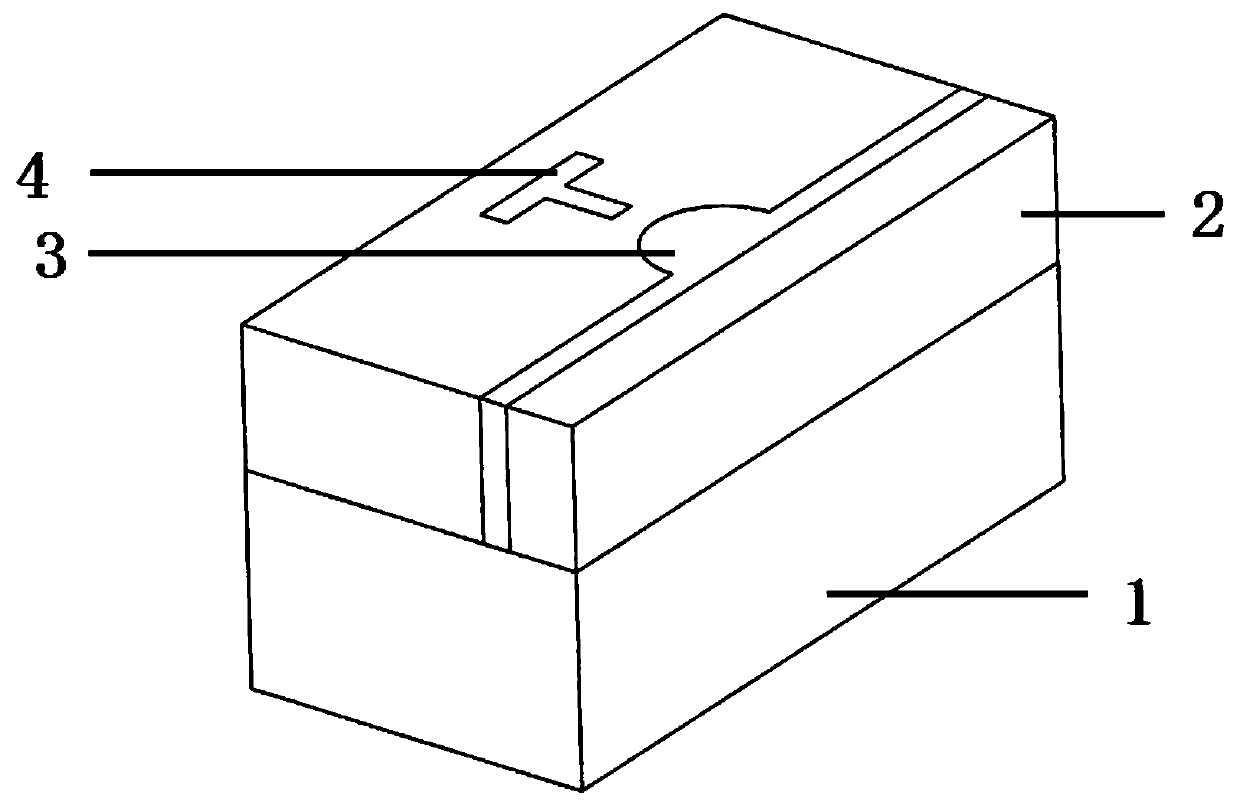Temperature sensor based on Fano resonance
A temperature sensor and resonant cavity technology, applied in the field of optical communication technology and sensing, can solve the problems of complex sensor preparation method, difficult filling of sensing medium, difficult mass production, etc., and achieve low cost, small volume, and reduced full width at half maximum. Effect
- Summary
- Abstract
- Description
- Claims
- Application Information
AI Technical Summary
Problems solved by technology
Method used
Image
Examples
Embodiment
[0025] refer to figure 1 , a temperature sensor based on Fano resonance, including a base layer 1 and a metal layer 2 sequentially stacked from bottom to top, and the metal layer 2 is provided with a first resonant cavity 3 and a second resonant cavity that are not in communication with each other Cavity 4, wherein, the first resonant cavity 3 is a cavity in which a rectangular cavity and a cavity with a semicircular shape are integrated, the cavity with a semicircular shape is located in the middle of the rectangular cavity, and the second resonant cavity 4 is a cavity with a semicircular shape A "T" shaped resonant cavity, the first resonant cavity 3 and the second resonant cavity 4 are filled with a temperature-sensitive medium.
[0026] The base layer 1 is silicon dioxide.
[0027] The metal layer 2 is a silver layer.
[0028] The dimensions of the first resonant cavity 3 and the second resonant cavity 4 can be adjusted.
[0029] The thicknesses of the first resonant ca...
PUM
 Login to View More
Login to View More Abstract
Description
Claims
Application Information
 Login to View More
Login to View More - R&D
- Intellectual Property
- Life Sciences
- Materials
- Tech Scout
- Unparalleled Data Quality
- Higher Quality Content
- 60% Fewer Hallucinations
Browse by: Latest US Patents, China's latest patents, Technical Efficacy Thesaurus, Application Domain, Technology Topic, Popular Technical Reports.
© 2025 PatSnap. All rights reserved.Legal|Privacy policy|Modern Slavery Act Transparency Statement|Sitemap|About US| Contact US: help@patsnap.com

